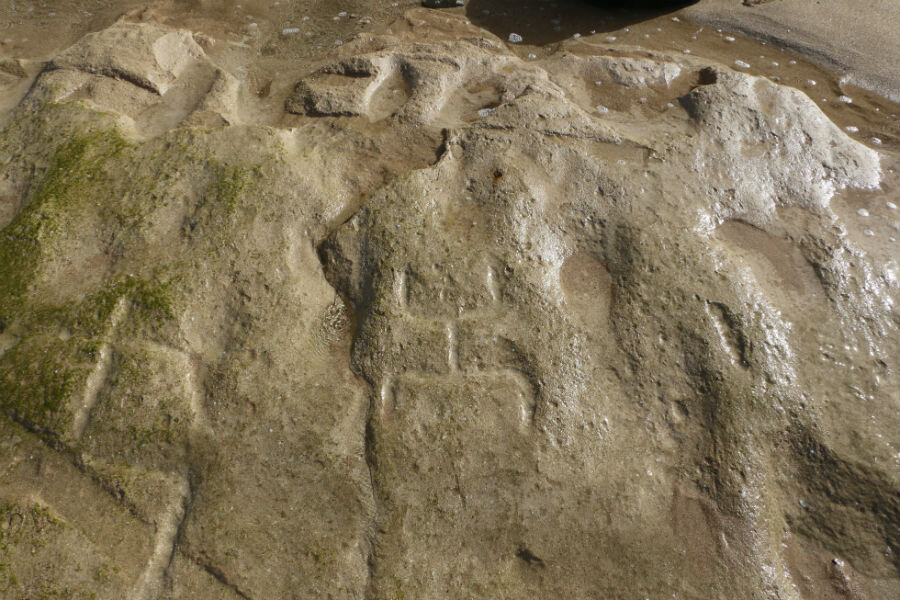Tourists in Hawaii surprised to discover 400-year-old petroglyphs
Loading...
Hawaiian state officials are working to preserve petroglyphs carved into rocks along the coast of Oahu and thought to date back more than 400 years, after a Texas couple stumbled upon them during a visit in July.
"For some reason there was a beam of light, just a beam," said Lonnie Watson, who came across the engravings with Mark Louviere as the two walked along the beach at sunset, according to the Associated Press. "It landed right on one of them and for some reason I just turned my head."
The petroglyphs, revealed briefly by shifting sands, turned out to cover about 60 percent of the beach. Officials have identified 17 carvings, with one measuring some five feet in length. A section of the state’s Department of Land and Natural Resources that preserves sites of historical significance is working with the US Army to document the engravings.
Officials say the series of carvings were likely created by the island’s aboriginal inhabitants. US Army scientist Alton Exzabe, one of the first experts to examine the carvings, said in a statement that out of the several thousand archeological sites managed by the Army in Hawaii, this was "the first one with petroglyphs directly on the shoreline."
"What's exciting for me is I grew up coming to this beach and now as an archaeologist working for the Army, helping to manage this site, we discovered these petroglyphs that have never been recorded," he said. "Some people have said they've seen them before, but this is quite a significant find."
Alan Downer, administrator for the state’s historical preservation division, urged the public not to touch them.
"While sands have covered them again, in time they will reappear and we want to make sure people know that they are fragile and culturally sensitive and should only be viewed," he said.
Glen Kila, a descendent of the aboriginal families who first settled the Waianae Coast, said in a statement that he had not known about the figures.
"They record our genealogy and religion," he said. "It’s very important to know about the lineal descendants of the area and their understanding of these petroglyphs. The interpretation of these petroglyphs can only be interpreted by the lineal descendants who are familiar with its history and culture."
In 2013, rock etchings discovered along a dry lakebed on a Nevada reservation were confirmed as the oldest known petroglyphs in North America, dating back at least 10,000 years. Anthropologists were surprised by the sophistication of the techniques.
"Unlike later drawings that sometimes depict a spear or antelope, the carvings are abstract with tightly clustered geometric designs – some are diamond patterns, others have short parallel lines on top of a longer line," wrote the Associated Press at the time.
This report contains material from the Associated Press.






